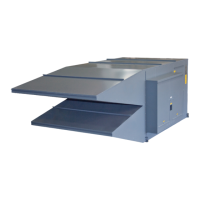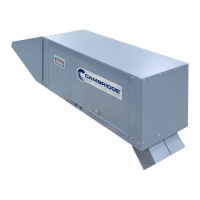M-SERIES
DRAW THRU
DIRECT GAS-FIRED
MAKE-UP AIR HEATERS
TECHNICAL MANUAL
M-TM2-0120
WARNING:
Improper installation, adjustment, alteration, service or maintenance can cause property
damage, injury or death. Read the installation, operating, and maintenance instructions
thoroughly before installing or servicing this equipment.
FOR YOUR SAFETY
The use and storage of gasoline or other flammable vapors and liquids in open containers in
the vicinity of this appliance is hazardous.
FOR YOUR SAFETY
If you smell gas:
1. Open windows.
2. Don’t touch electrical switches.
3. Extinguish any open flame.
4. Immediately call your gas supplier.
Made in the USA
90.1
ASHRAE
ASHRAE
COMPLIANT
COMPLIANT
®


